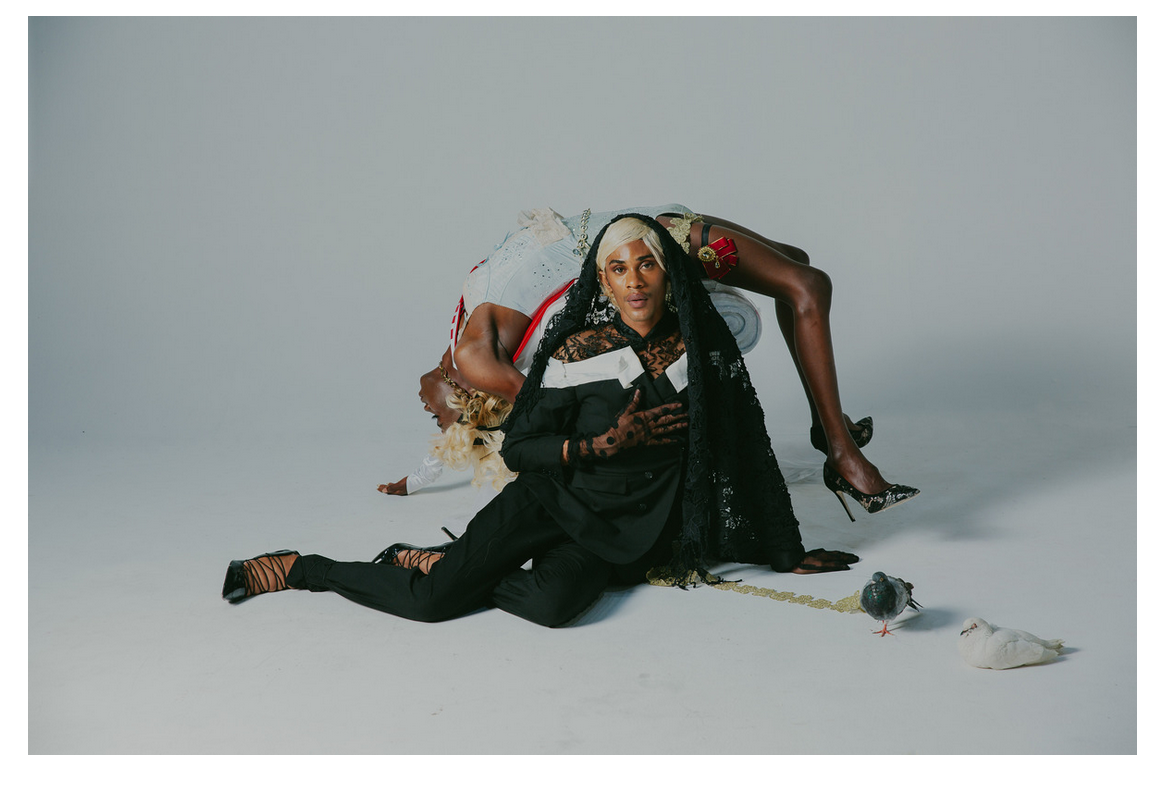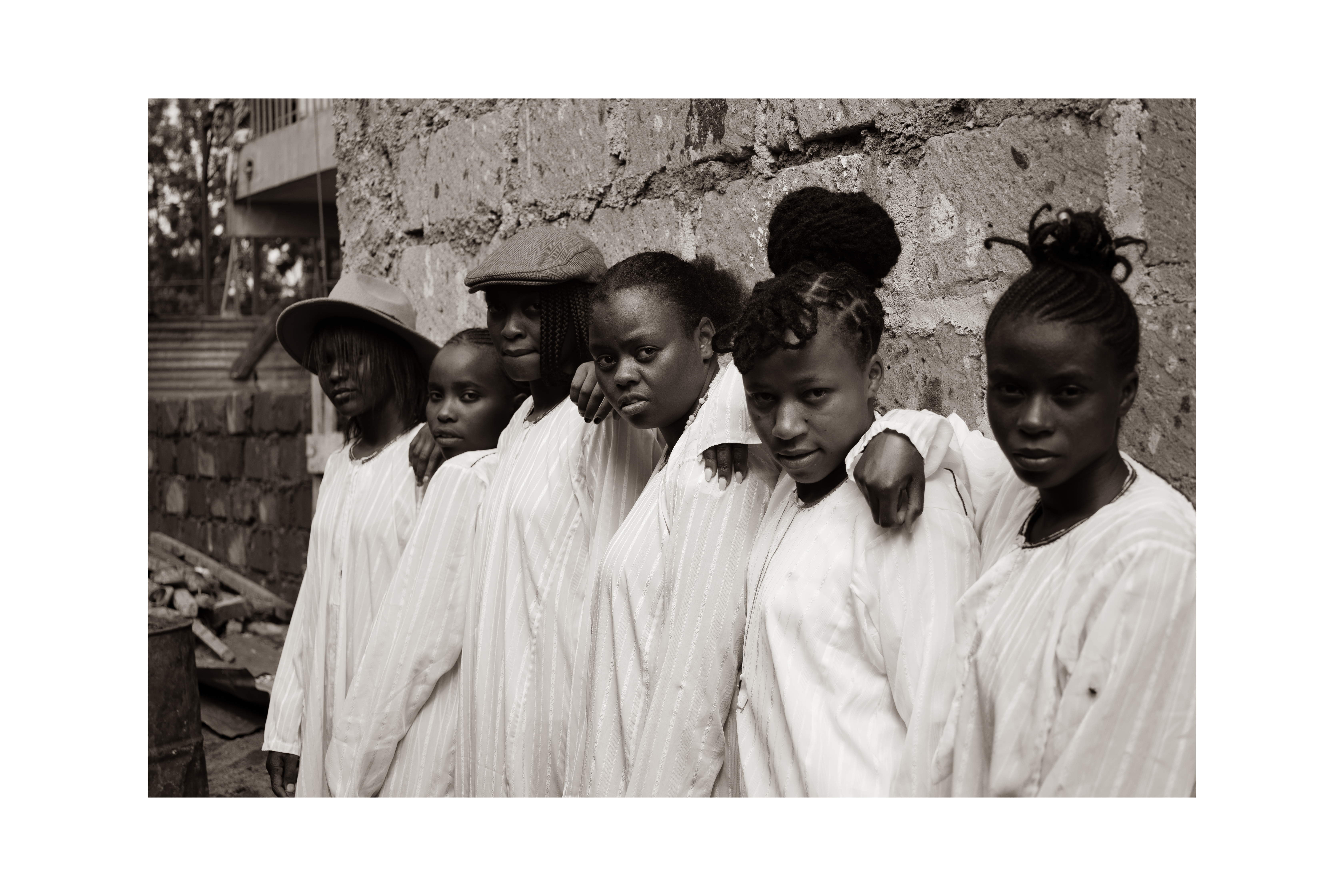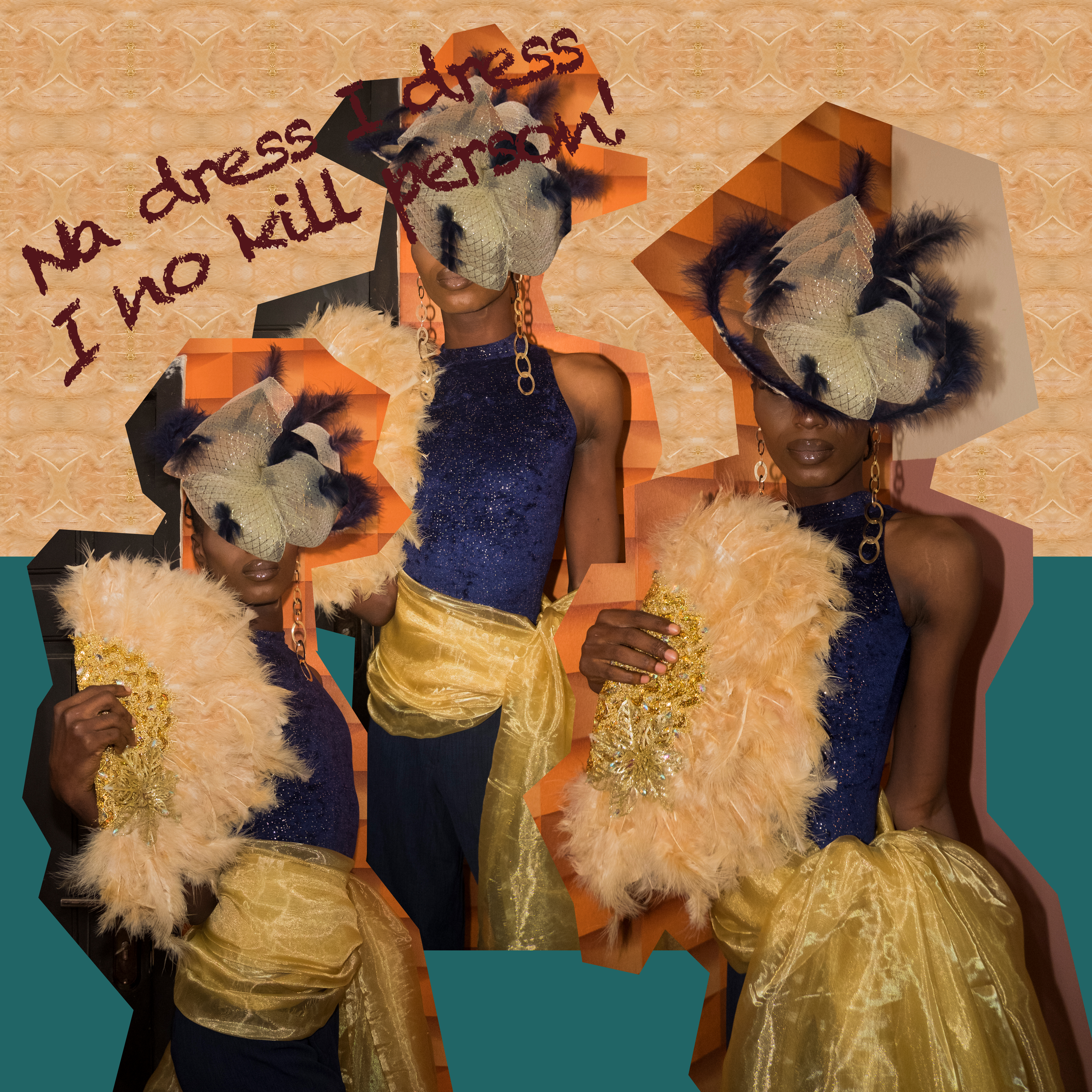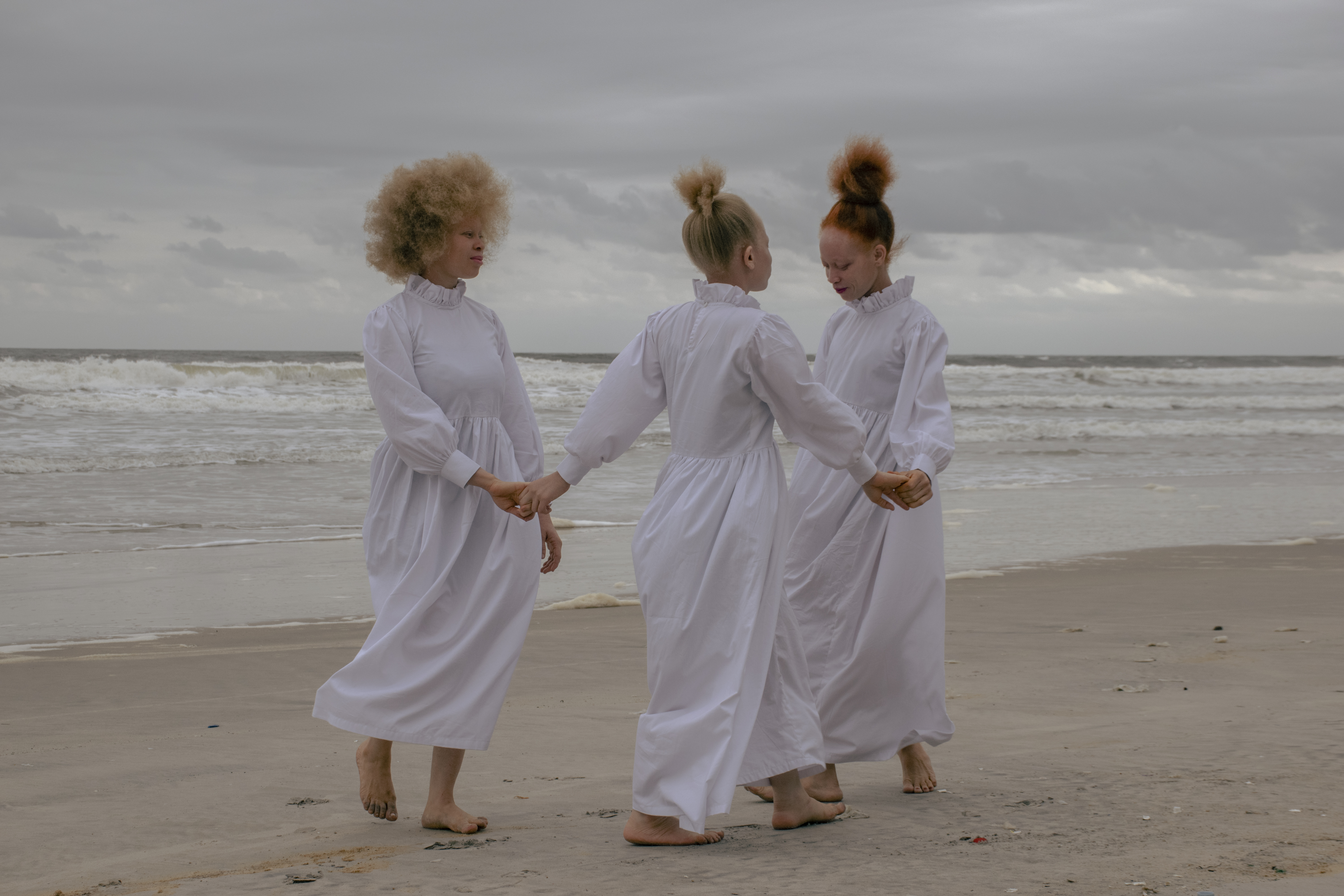
Brave Beauties in Communion: Imaging Black Queer Liberation
Project
This exhibition brings together works by contemporary photographers Daniel Obasi, DeLovie Kwagala, Keren Lasme, Nella Ngingo, and Stephen Tayo in an effort to understand the image of black queer liberation througha self directed and self sustained lens.
Nella Ngingo's series is a necessary point of departure in imaging the queer subject. Departing from the pink washed glamor that over saturated queer imaging (specifically in Europe and North America), Ngingo chooses familiarity as a lens for her subjects.
Nella photographs her subjects in her apartment only after spending time with them and establishing a rapport thus resulting in vulnerable and authentic portraits of queer existence. Nella's series stands at the helm of the exhibition in its use of vulnerability as a liberative practice.
We don’t always already know queerness. It is in a state of the not yet. A mode of being in the world that is also inventing the world. Brave Beauties in Communion defines queerness as that of transformation, of shapeshifting, of fluency, of form to deform; of code to switch, of mimicry, of flamboyance, of grace, of fluidity, and of bravery 2 .
Critically, Brave Beauties in Communion brings major political geographies in fellowship around the issue of black queer liberation. Pitching from Abidjan, Lagos, Kampala, New York City and Amsterdam. Aspiring to set the stage for a nuanced conversation on liberative imaging of black queer communities across Africa and its diasporas.
The need to stand still and do a survey exhibition on how black queer liberation is imaged comes at a significant time. We are in a time of various queer-phobic policies rooting across Africa. Most recently the issue of Uganda has been making international headlines.
Delovie’s work on everyday queer-intimancy having to fugitively unfold in Kenya brings the Ugandan issue into focus. Delovie had to teach Kenyans to perform Ugandanness. This, in an effort to image a utopia where casual everyday queer intimacy is allowed to exist in the Ugandan context. A fantasy that notably unfolds, too close to home.
Coming out, not of hiding, but rather out of our safer spaces. Coming out in numbers, to occupy space. This is an image that goes beyond representation. It disturbs representation. Stephen Tayo’s What if is pivotal here in queering documentary photography. In documentary photography, a candid subject is prized above all else, a drag artist must spend hours getting into character and her very existence in drag presents a falsehood to the audience, one that is acknowledged by the photographer and the audience for the photograph to be truly enjoyed.

Brave Beauties in Communion revels in all the ways that queer people have occupied space. This is a movement, a perfectly staged mass tantrum, disobedient bodies sprinting past surveillance to perform the magical impossibility of projecting ourselves into a future.

This promise to occupy, to assemble, to take up exorbitant amounts of space is encouraged in Daniel Obasi’s Corridors of Power. Daniel examines the idea of power structures within the society and how they impact sexuality and masculinity. The focus is queerness and the importance of reclaiming such spaces where queer representations are either non-existent or completely stifled.
Daniel’s Corridors of Power stages a politicized fantasy of queer imagination occupying the justice system, the government, the church, marriage, the military, and pageantry.

A return to nature at the end here, as an expansion of the net that this exhibition casts. Keren Lasme’s A Spectacle of the Peculiar is a body of work that activates theories of ‘dis-ability’ and recasts them as a site of queerness. The ethereal composition of this series invites us into the playful dreamscape that Keren uses as an alternative space of exploration and (un)learning to negotiate freedom.
Not being of this world, as being other-wisely able to be in this world. Possessing a kind of knowing of particular wisdoms around being and existing, A Spectacle of the Peculiar asks us to consider the queerness of dis-ability as a kaleidoscope possibility in self-hood and identity formation for the queer subject.
This survey, traces how queerphobic law-making has forced queer communities into fugitivity. But most importantly, we also track how a reverberating refusal to be erased, pressed, buried and rundown – has been performed. We have seen the perfect drag, we have seen flight as fight, we have seen sharp political critique in fastical storytelling, we have seen gentle vulnerability in familiar living rooms, we have a queering of the other-wisely abled.

Lastly, Brave Beauties in Communion: Imaging Black Queer Liberation is an ode to Motormond’s ethos of circulating critical pan-diasporic culture. This is a communioning, a politically charged coming together of queer Africans in diaspora and queer indigenous Africans. A space for symbiosis and eccentric economies, with the need to pan diasporic-ally politically align as the strongest under-current.
Blackpentecostal Breath:The Aesthetics of Possibility –Ashon T. Crawley2 https://www.instituteforpostnaturalstudies.org/studies/mutability-and-mutualism/